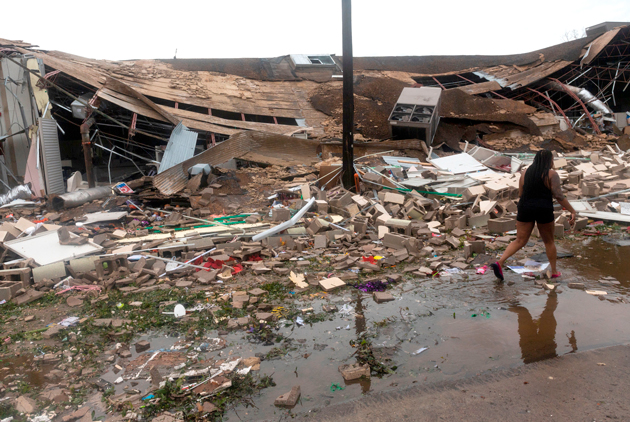Across the Caribbean, Florida, and up the Eastern seaboard to Atlantic Canada, communities are facing devastation from a recent—and ongoing—spate of mid-season hurricanes.
Ian follows right on the heels of catastrophic damage from Hurricane Fiona. In the Caribbean, 20% of residents in Puerto Rico are still without power after Hurricane Fiona, and the island took another pummeling from Hurricane Ian while it was a Category 4 storm. To the north, post-tropical storm Fiona inflicted catastrophic damage across parts of eastern Canada last week, causing devastating property damage and leaving hundreds of thousands of Canadians without power. While it is too early for complete estimates, ratings agency DBRS Morningstar projected the insured losses may fall in the range of $300 million to $700 million. According to Patrick Douville, DBRS’s vice president of insurance, “Fiona will likely be one of the largest catastrophic events in history for Atlantic Canada.”
Once it is safe to do so, risk managers will have considerable work to do to help their organizations and communities recover.
Dalton advised, “Additional steps businesses should take include engaging a professional claims preparation firm to help document the claim, preparing a daily timeline of impact and changes to operational activities, asking for a cash advance, and setting up a cost tracking code and/or general ledger account to capture incident-related expenses. If it’s a contingent loss, meaning operations are down because of physical damage to a customer or supplier, ask that customer or supplier send you documentation of their physical damage and ask them to communicate with you as much as possible.”
In the July/August cover story from Risk Management Magazine, “Hurricane Claims: Key Tips to Minimize Losses and Maximize Recovery,”attorneys Andrea DeField and Alice Weeks offered guidance on steps for risk and insurance professionals to take before, during and after hurricanes, including hurricane preparation and response checklists.
For organizations impacted by this season’s storms, the following post-storm tips can help risk professionals navigate disaster recovery and the claims management process:
Post-Storm Checklist
- Gather insurance policies and related insurance records. If your policy was destroyed or is lost, contact your insurance company or agent/broker to request a copy.
- Contact other business partners who may have copies of your insurance policies and records, such as attorneys and accountants.
- Give written notice to your broker and insurer immediately. Notice should provide the following basic information:
- Name and address of insured
- Location of loss
- Date and time of loss
- Contact name, phone and fax number
- Brief description of the loss
- Acquire copies of police or fire reports from your local police or fire department, if applicable. If individuals caused damage to the premises or stole anything in the wake of the disaster, obtain a separate police report about the damage or losses or request that additional information be added to the initial report.
- Secure vital records and ledgers. Ensure that your accounting department opens a separate general ledger for hurricane-related expenses.
- Collect photos or videos as proof of damage. Ensure these are taken before any mitigations are implemented so that they accurately capture the aftermath and losses.buy zydena online www.mariettaderm.com/wp-content/uploads/2022/08/pdf/zydena.html no prescription pharmacy
- To the extent possible, take steps to mitigate any further damage once the storm has passed.
- If you have not already, retain a forensic accountant to begin preparing your business income and extra expense loss calculations.
- Prepare a proof of loss. A proof of loss provides details identifying the property destroyed or damaged, and documents the amount of loss incurred. Generally, any information substantiating the claim can become part of your proof of claim, including photos, videos, receipts and records. Check with your insurer for the specific information required as some companies may ask for a detailed list of documents or require you to fill out a specific proof of loss form.
- Submit proof of loss, photos, and reports to your insurer. Be sure to check any time limitations on the submission of a proof of loss and request an extension, if needed.
- Assist with the insurance company’s investigation. Property policies typically allow the insurer to conduct a reasonable investigation of the claim and require the insured’s cooperation. This may be in a provision titled “Duties in the Event of Loss” that allows the insurer to interview the policyholder claimants in a process called an “examination under oath.” The policy may also require the insured to exhibit the property, take reasonable steps to protect it, and generally cooperate with the insurer’s investigation. The insurer’s requests for information must typically be considered reasonable, however. A policyholder’s failure to reasonably cooperate could be used by the insurer as a defense to coverage.

